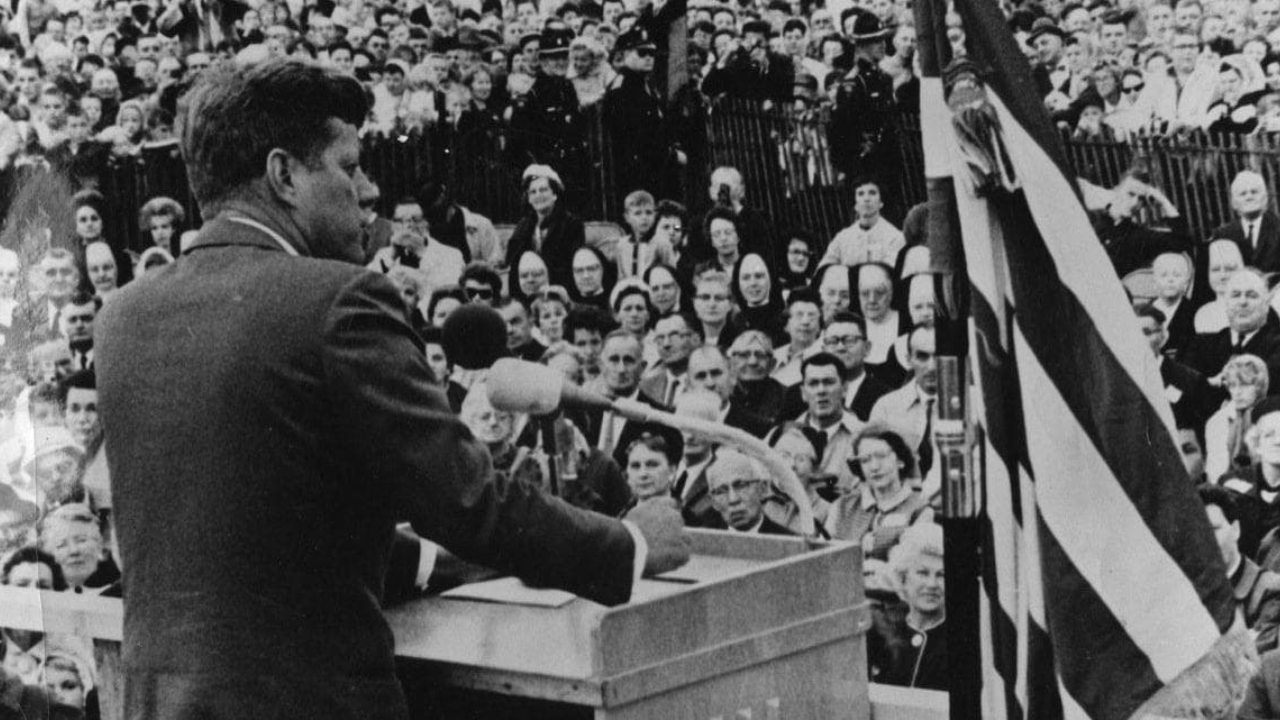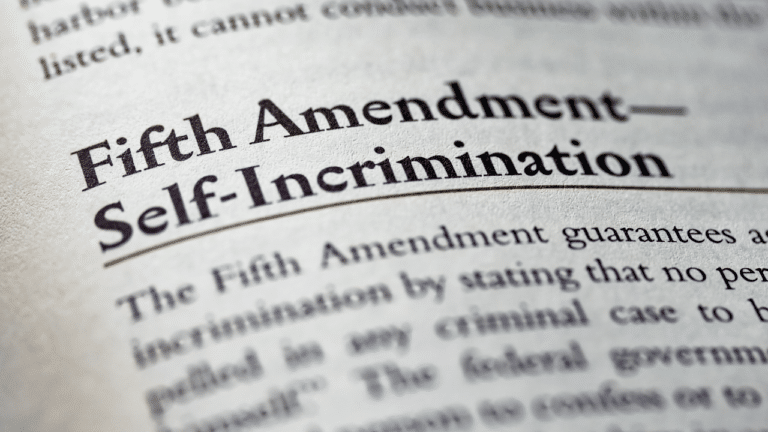The Twenty-Second Amendment limits the number of terms that a United States president may serve to two.
WHAT IS THE TEXT TO THE TWENTY-SECOND AMENDMENT TO THE CONSTITUTION?
U.S. CONST. Amend. XXII. PRESIDENTIAL TERM LIMITATIONS.
Section 1: No person shall be elected to the office of the President more than twice, and no person who has held the office of President, or acted as President, for more than two years of a term to which some other person was elected President shall be elected to the office of the President more than once. But this Article shall not apply to any person holding the office of President when this Article was proposed by the Congress, and shall not prevent any person who may be holding the office of President, or acting as President, during the term within which this Article becomes operative from holding the office of President or acting as President during the remainder of such term.
Section 2: This article shall be inoperative unless it shall have been ratified as an amendment to the Constitution by the legislatures of three-fourths of the several States within seven years from the date of its submission to the States by the Congress.
WHAT IS THE HISTORICAL ORIGIN OF THE TWENTY-SECOND AMENDMENT?
Although the Twenty-Second Amendment was ratified in 1951, discussion about term limits actually started back in 1787, during the Constitutional Convention. The Founding Fathers could not agree on who should elect a president and for how long they can serve. Many Framers, including Alexander Hamilton and James Madison, felt that the president should be elected by Congress instead of the people, and have a lifetime appointment. This was a surprising take considering that the newly minted country had just revolted against a king. However, this was considered an “executive monarchy” by others, and the idea was quickly shut down with a vote.
The Founding Fathers eventually decided that the president will be elected by the people via the Electoral College, and that their term should last four years. However, they chose not to include term limits in the Constitution because they wanted to allow for extenuating circumstances, such as a national emergency. The Framers were also confident that constant changes in the political climate and people’s voting behaviors would prevent a president from being elected beyond two terms.
In spite of the Founding Fathers purposefully not adding term limits to the presidency, their decision was regularly challenged. Between 1788 and 1896, 125 versions of amendments regarding term limits were submitted to Congress. This was brought on by the ongoing concern that a president could abuse their position of power to continue to be reelected.
Washington’s Unintended Effect on Term Limits
The lack of restrictions on term limits was quickly put to the test with the first president of the United States. By the end of his second term, George Washington was 64 years old. He had grown weary from serving the public for 45 years as a military leader, Founding Father, and president. He was also in declining health. Although many urged him to run a third term, Washington was concerned that dying in office would set a precedent in that the presidency is a lifetime appointment. He decided to retire after two terms.
Indeed, Washington’s actions set a standard, but not in the manner he feared. Among the next 31 presidents after Washington, seven served two full terms: Thomas Jefferson, James Madison, James Monroe, Andrew Jackson, Ulysses S. Grant, (non-consecutive) Grover Cleveland, and Woodrow Wilson. The rest were either defeated after their first term, died while in office, or succeeded a president that died in office.
This is not to say that every president followed in Washington’s footsteps. A few attempted to run for a third term or at least strongly considered it, but did not succeed. Grant aimed for a third term, but lost the Republican Party nomination. Both Cleveland and Wilson hoped for a third term but did not receive support from their respective parties. Theodore Roosevelt originally ended his presidency after two terms but was so dissatisfied with his successor William Howard Taft that he decided to run for a third, non-consecutive term. He lost the Republican Party nomination to Taft.
Interestingly, it would take a different Roosevelt to break the 150-year-old tradition.
The Four-Term President
The Founding Fathers’ concerns about extenuating circumstances finally came into play during World War II. When he was elected as the 32nd President of the United States, Franklin Delano Roosevelt did not waste his first one hundred days in office. He pushed to end Prohibition with the Twenty-First Amendment, then attempted to lift the country out of the Great Depression with the New Deal, a series of social and economic reforms. When the Great Depression continued, he took on a more aggressive approach with the Second New Deal, but it was still not enough to bring the country back on its feet.
FDR ended his second term in 1940 achieving mediocre success with the Great Depression. However, when the U.S. found itself in danger of being pulled into World War II, voters felt uncomfortable at the thought of leadership change. In times of crisis, people often prefer to stick with the familiar. Although he was hesitant to do so, Roosevelt ran for a third term and won, breaking Washington’s precedence that he set 150 years earlier.
Four years later, the world continued to burn and the American public felt they still needed FDR’s leadership. This time, he needed no convincing and ran for an unprecedented fourth term. It was believed that he felt obligated to see to the end of World War II, in spite of his rapidly deteriorating health. He won the election, but would not live long enough to serve out the term. President Roosevelt died a mere three months after his fourth inauguration.
The Republican Party’s Response
Roosevelt’s four-term win shook the Republican party to its core. They feared that his lengthy stay in the White House would set a dangerous precedent. While it was understandable that the country needed stable leadership during a tumultuous period, they argued that in times of peace there was no reason for a president to stay in power for so long. When they took control of both sides of Congress in 1946, no one was surprised when the Republicans immediately pushed for an amendment that would limit future presidents to two terms.
Critics derided their actions and considered it a partisan revenge. Elmer Davis, journalist and head of the Office of War Information during World War II, remarked, “They could never beat him when he was alive, so they beat him when he was dead.” Nevertheless, with a Republican-controlled Congress and the support of Southern Democrats, the Twenty-Second Amendment was passed in 1947, with the Senate voting 59-23, and the House voting 285-121. It was fully ratified by the states in 1951.
WHAT DOES THE TWENTY-SECOND AMENDMENT DO?
The Twenty-Second Amendment limits the presidential office to two terms, making Washington’s established tradition an official law.
TWENTY-SECOND AMENDMENT
The Founding Fathers did not include term limits in the Constitution because they wanted to account for unforeseen circumstances which may require a President to stay in office longer than the minimally required four years. Washington inadvertently created a precedent of two terms, which seemed like a happy medium for his successors. Regardless, many challenged the Framers’ decision over the years and submitted versions of term limit amendments, with no success. It took Roosevelt’s four-term win streak to convince Congress that limitations were needed.
Since then, several presidents have questioned and even criticized the Twenty-Second Amendment. Harry Truman vehemently opposed it,calling it, “one of the worst that has been put into the Constitution, except for the Prohibition Amendment.” Ronald Reagan argued that term limits interfered with the rights of the people and wanted to repeal the amendment. Bill Clinton felt he would have won again if he ran for a third term, adding that the amendment should be changed to reflect an improved life expectancy. Barack Obama also wished he could run again and remarked, “There’s a lot that I’d like to do to keep America moving, but the law’s the law.”
TWENTY-SECOND AMENDMENT COURT CASES
There have been very few Supreme Court cases that directly address the Twenty-Second Amendment.
- In U.S. Term Limits, Inc. v. Thornton (1995), Amendment 73 was added to the Arkansas state constitution, which added term limits to members of Congress. The Supreme Court ruled that the states cannot alter any Congressional qualifications that have been laid out in the Constitution. Therefore, any state Congressional term limit is considered unconstitutional.













